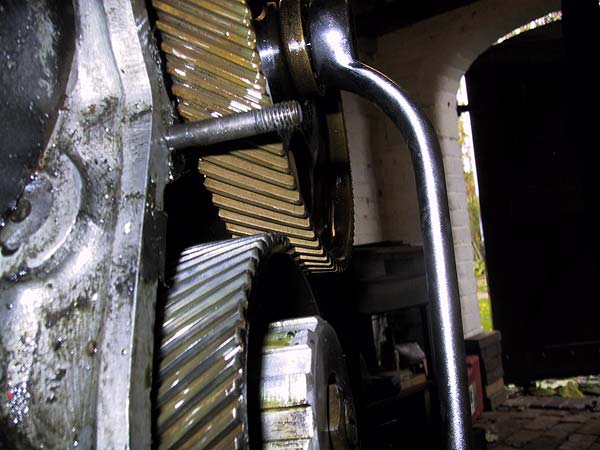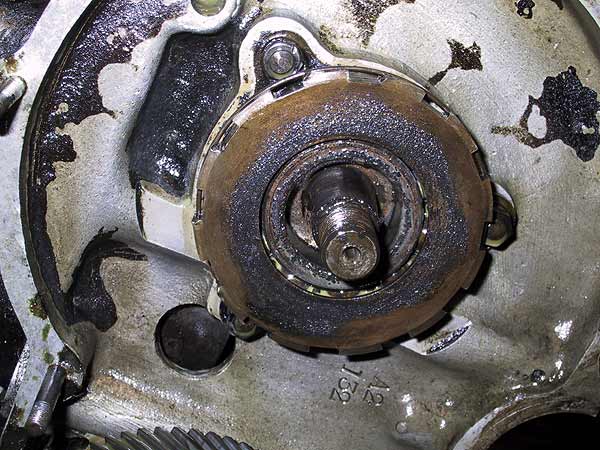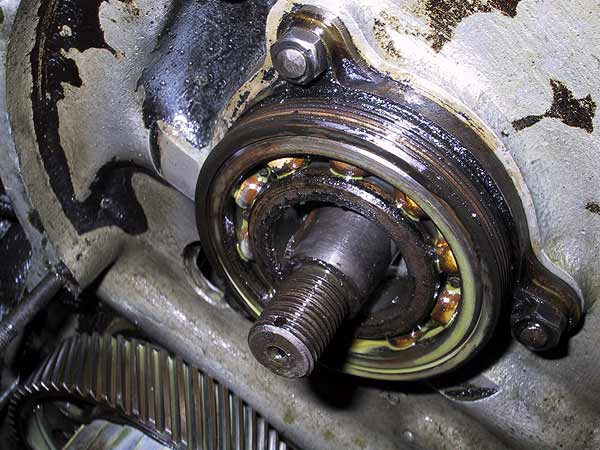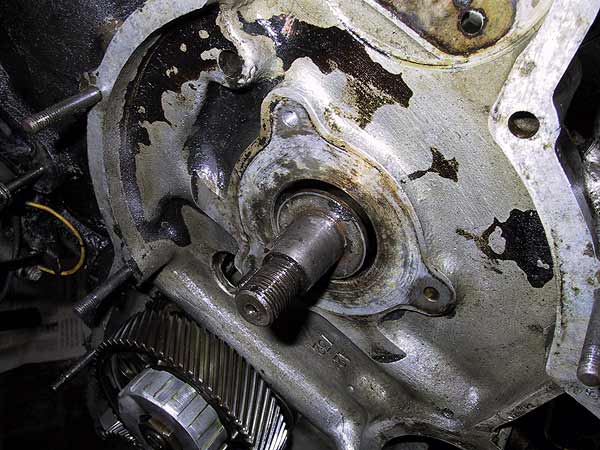Rolls-Royce 20/25 - cam wheel removal
All photographs on this page are taken with the engine canted over at roughly 80 degrees to the right.
 |
The cam wheel must be spragged so that the lock nut can be released. It is important that the teeth are not damaged during this procedure. Under no circumstances should the teeth be used as the jamming medium. When the lock nut is released it will immediately bind against the serrated nut on its outer circumference. Keep undoing the nut and it will draw the cam wheel off the shaft as shown here. |
 |
The front of the camshaft is supported by a ball race, which is held in place by a serrated nut. Remove the circlip and use a 'C'-spanner to release the nut. In this instance the nut had to be heated with a propane torch to release the thread. In such circumstances it is imperative that appropriate care is taken due to the amount of oil retained in the engine. Keep a fire extinguisher at hand and wear protective clothing. |
 |
Yet another problem. There are 3 fasteners holding the bearing carrier: 2 bolts and 1 stud (just visible at 7 o'clock in the picture). All three bolts had been peened over to lock the nuts in place. A Dremel with cutting disk was use to carefully remove the splayed thread material before undoing the nuts. It is possible to drift out the camshaft without removing the carrier but the front flange of the cam will hammer against the inner bearing race. Cam removal is difficult enough without leaving additional obstacles in the way. |
 |
The camshaft nose showing the flange. The bearing carrier fills the gap between the flange and the casting but the flange is too large to pass through the bearing itself. NOTE. The bolt, just visible at 7 o'clock in the picture, can only be extracted once the cylinder block is removed. It is, therefore, important to replace it prior to attaching the block. The black areas are the remnants of paint. Irrespective of problems with porosity, and manufacturers claims of foolproof products, I consider painting the inside of engines a recipe for disaster. It invariably peels off and ends up clogging oils ways and filters to the detriment of engine life. DON'T DO IT! |